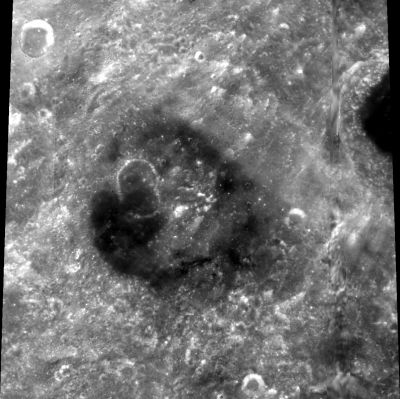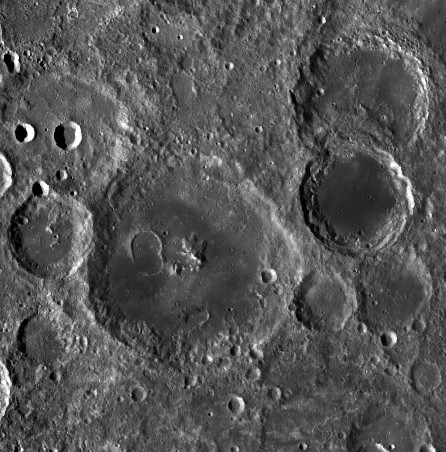Difference between revisions of "Joliot"
| Line 5: | Line 5: | ||
|} | |} | ||
<div id="toc"> | <div id="toc"> | ||
| − | + | [http://www.lpod.org/coppermine/displayimage.php?pid=1769&fullsize=1 [[Image:normal_joliot-clem1.jpg|external image normal_joliot-clem1.jpg]]][[Image:joliot.jpg|joliot.jpg]]<br /> left: ''[http://lpod.org/coppermine/displayimage.php?pos=-1769 Clementine] .'' right: '''''LROC .''''' Light ray material from nearby '''[http://the-moon.us/wiki/Giordano%20Bruno Giordano Bruno]''' is seen at '''Joliot''' floor; dark floor crater '''[http://the-moon.us/wiki/Lomonosov Lomonosov]''' at right margin<br /> <br /> | |
| − | |||
==Images== | ==Images== | ||
[http://www.lpod.org/coppermine/thumbnails.php?album=search&type=full&search=Joliot LPOD Photo Gallery] [http://www.lpi.usra.edu/resources/lunar_orbiter/bin/srch_nam.shtml?Joliot%7C0 Lunar Orbiter Images] [http://www.lpi.usra.edu/resources/apollo/search/feature/?feature=Joliot Apollo Images]<br /> Perhaps not mentioned in the LPI's list, but... Apollo 10 made two photographs of '''Joliot''' and nearby '''Lomonosov''' ([http://www.lpi.usra.edu/resources/apollo/frame/?AS10-27-3916 AS10-27-3916], [http://www.lpi.usra.edu/resources/apollo/frame/?AS10-27-3917 3917]). The captions below both frames are totally wrong, because those photographs don't show '''Ptolemaeus''' and '''Tycho'''!<br /> Detection of errors: Danny Caes<br /> <br /> | [http://www.lpod.org/coppermine/thumbnails.php?album=search&type=full&search=Joliot LPOD Photo Gallery] [http://www.lpi.usra.edu/resources/lunar_orbiter/bin/srch_nam.shtml?Joliot%7C0 Lunar Orbiter Images] [http://www.lpi.usra.edu/resources/apollo/search/feature/?feature=Joliot Apollo Images]<br /> Perhaps not mentioned in the LPI's list, but... Apollo 10 made two photographs of '''Joliot''' and nearby '''Lomonosov''' ([http://www.lpi.usra.edu/resources/apollo/frame/?AS10-27-3916 AS10-27-3916], [http://www.lpi.usra.edu/resources/apollo/frame/?AS10-27-3917 3917]). The captions below both frames are totally wrong, because those photographs don't show '''Ptolemaeus''' and '''Tycho'''!<br /> Detection of errors: Danny Caes<br /> <br /> | ||
| Line 25: | Line 24: | ||
* The dark patches on the floor of this crater were known as [http://the-moon.us/wiki/Mare%20Novum Mare Novum] in the original [http://the-moon.us/wiki/IAU%20nomenclature IAU nomenclature] of [http://the-moon.us/wiki/Blagg%20and%20M%C3%BCller Blagg and Müller] (1935). | * The dark patches on the floor of this crater were known as [http://the-moon.us/wiki/Mare%20Novum Mare Novum] in the original [http://the-moon.us/wiki/IAU%20nomenclature IAU nomenclature] of [http://the-moon.us/wiki/Blagg%20and%20M%C3%BCller Blagg and Müller] (1935). | ||
* These patches were apparently noted in Kuiper’s ''[http://the-moon.us/wiki/Photographic%20Atlas%20of%20the%20Moon Photographic Atlas of the Moon]'' (1960); but they were more prominent in the Soviet [http://the-moon.us/wiki/Lunar%20missions Luna 3] photography, prompting the new name '''Joliot-Curie''' to be suggested by Russian scientists and to be included in the initial list of 18 far-side names somewhat hastily approved by the IAU in [http://the-moon.us/wiki/IAU%20Transactions%20XIB 1961]. The list also included a newly named southern hemisphere crater called '''Sklodowska-Curie'''. | * These patches were apparently noted in Kuiper’s ''[http://the-moon.us/wiki/Photographic%20Atlas%20of%20the%20Moon Photographic Atlas of the Moon]'' (1960); but they were more prominent in the Soviet [http://the-moon.us/wiki/Lunar%20missions Luna 3] photography, prompting the new name '''Joliot-Curie''' to be suggested by Russian scientists and to be included in the initial list of 18 far-side names somewhat hastily approved by the IAU in [http://the-moon.us/wiki/IAU%20Transactions%20XIB 1961]. The list also included a newly named southern hemisphere crater called '''Sklodowska-Curie'''. | ||
| − | * '''Joliot-Curie''' was next mentioned in D.W.G. Arthur’s [http://the-moon.us/wiki/IAU%20Transactions%20XIIB 1964 report] of changes introduced in the ''[http://the-moon.us/wiki/System%20of%20Lunar%20Craters System of Lunar Craters]'', where it is stated that the name '''Mare Novum''' is being dropped and the name '''Joliot-Curie''' being added for a 142 km diameter crater whose floor includes the former '''Mare Novum'''. The report implies that this is a redefinition because the Russian name had been meant to be equivalent to '''Mare Novum''' -- that is, a name for the dark patches rather than for the surrounding crater -- even though the lack of the word "Mare" in the Russian name would suggest meant the crater. <span class="membersnap">- | + | * '''Joliot-Curie''' was next mentioned in D.W.G. Arthur’s [http://the-moon.us/wiki/IAU%20Transactions%20XIIB 1964 report] of changes introduced in the ''[http://the-moon.us/wiki/System%20of%20Lunar%20Craters System of Lunar Craters]'', where it is stated that the name '''Mare Novum''' is being dropped and the name '''Joliot-Curie''' being added for a 142 km diameter crater whose floor includes the former '''Mare Novum'''. The report implies that this is a redefinition because the Russian name had been meant to be equivalent to '''Mare Novum''' -- that is, a name for the dark patches rather than for the surrounding crater -- even though the lack of the word "Mare" in the Russian name would suggest meant the crater. <span class="membersnap">- Jim Mosher</span> |
| − | * In [http://the-moon.us/wiki/Menzel%2C%201971#Curie_problem 1970] the IAU re-thought the problem of naming these craters in honor of the Curie family, because at that time it wanted to avoid features with similar-sounding names. It was decided to rename the present crater '''Joliot''' in honor of Frederic Joliot-Curie, and the southern hemisphere crater [http://the-moon.us/wiki/Sklodowska Sklodowska] in honor of Marie Curie,. To honor Pierre Curie the new name [http://the-moon.us/wiki/Curie Curie] was assigned to a previously unnamed crater to the southwest of [http://the-moon.us/wiki/Sklodowska Sklodowska]. It is curious that the 1970 IAU citation does not mention [http://en.wikipedia.org/wiki/Ir%C3%A8ne_Joliot-Curie Irene Joliot-Curie], who was so closely associated with '''Joliot''', and co-winner, with him, of the Nobel Prize. <span class="membersnap">- | + | * In [http://the-moon.us/wiki/Menzel%2C%201971#Curie_problem 1970] the IAU re-thought the problem of naming these craters in honor of the Curie family, because at that time it wanted to avoid features with similar-sounding names. It was decided to rename the present crater '''Joliot''' in honor of Frederic Joliot-Curie, and the southern hemisphere crater [http://the-moon.us/wiki/Sklodowska Sklodowska] in honor of Marie Curie,. To honor Pierre Curie the new name [http://the-moon.us/wiki/Curie Curie] was assigned to a previously unnamed crater to the southwest of [http://the-moon.us/wiki/Sklodowska Sklodowska]. It is curious that the 1970 IAU citation does not mention [http://en.wikipedia.org/wiki/Ir%C3%A8ne_Joliot-Curie Irene Joliot-Curie], who was so closely associated with '''Joliot''', and co-winner, with him, of the Nobel Prize. <span class="membersnap">- Jim Mosher</span> |
<br /> | <br /> | ||
==LPOD Articles== | ==LPOD Articles== | ||
| Line 33: | Line 32: | ||
<br /> <br /> | <br /> <br /> | ||
---- | ---- | ||
| − | + | </div> | |
Revision as of 17:28, 15 April 2018
Contents
Joliot
| Lat: 25.8°N, Long: 93.1°E, Diam: 164 km, Depth: 2.86 km, Rükl: (farside), pre-Nectarian |


left: Clementine . right: LROC . Light ray material from nearby Giordano Bruno is seen at Joliot floor; dark floor crater Lomonosov at right margin
Images
LPOD Photo Gallery Lunar Orbiter Images Apollo Images
Perhaps not mentioned in the LPI's list, but... Apollo 10 made two photographs of Joliot and nearby Lomonosov (AS10-27-3916, 3917). The captions below both frames are totally wrong, because those photographs don't show Ptolemaeus and Tycho!
Detection of errors: Danny Caes
Maps
(LAC zone 46A4) USGS Digital Atlas PDF
Description
Description: Wikipedia
Additional Information
- Depth data from Kurt Fisher database
- Westfall, 2000: 2.86 km
- Central peak composition: A & GNTA1 (Tompkins & Pieters, 1999)
Nomenclature
- Named for Jean Frédéric Joliot-Curie né Joliot (March 19, 1900 – August 14, 1958), a French physicist and Nobel laureate. While being a lecturer at the Paris Faculty of Science, he collaborated with his wife (the daughter of Marie Sklodowska-Curie) on research on the structure of the atom, in particular on the projection of nuclei, which was an essential step in the discovery of the neutron. In 1935 they were awarded the Nobel Prize for Chemistry.
- The dark patches on the floor of this crater were known as Mare Novum in the original IAU nomenclature of Blagg and Müller (1935).
- These patches were apparently noted in Kuiper’s Photographic Atlas of the Moon (1960); but they were more prominent in the Soviet Luna 3 photography, prompting the new name Joliot-Curie to be suggested by Russian scientists and to be included in the initial list of 18 far-side names somewhat hastily approved by the IAU in 1961. The list also included a newly named southern hemisphere crater called Sklodowska-Curie.
- Joliot-Curie was next mentioned in D.W.G. Arthur’s 1964 report of changes introduced in the System of Lunar Craters, where it is stated that the name Mare Novum is being dropped and the name Joliot-Curie being added for a 142 km diameter crater whose floor includes the former Mare Novum. The report implies that this is a redefinition because the Russian name had been meant to be equivalent to Mare Novum -- that is, a name for the dark patches rather than for the surrounding crater -- even though the lack of the word "Mare" in the Russian name would suggest meant the crater. - Jim Mosher
- In 1970 the IAU re-thought the problem of naming these craters in honor of the Curie family, because at that time it wanted to avoid features with similar-sounding names. It was decided to rename the present crater Joliot in honor of Frederic Joliot-Curie, and the southern hemisphere crater Sklodowska in honor of Marie Curie,. To honor Pierre Curie the new name Curie was assigned to a previously unnamed crater to the southwest of Sklodowska. It is curious that the 1970 IAU citation does not mention Irene Joliot-Curie, who was so closely associated with Joliot, and co-winner, with him, of the Nobel Prize. - Jim Mosher
LPOD Articles
Deep, Young and Ashy
Out on a Gaussian Limb (Terrestral photograph of Joliot, made during favourable libration).
Bibliography